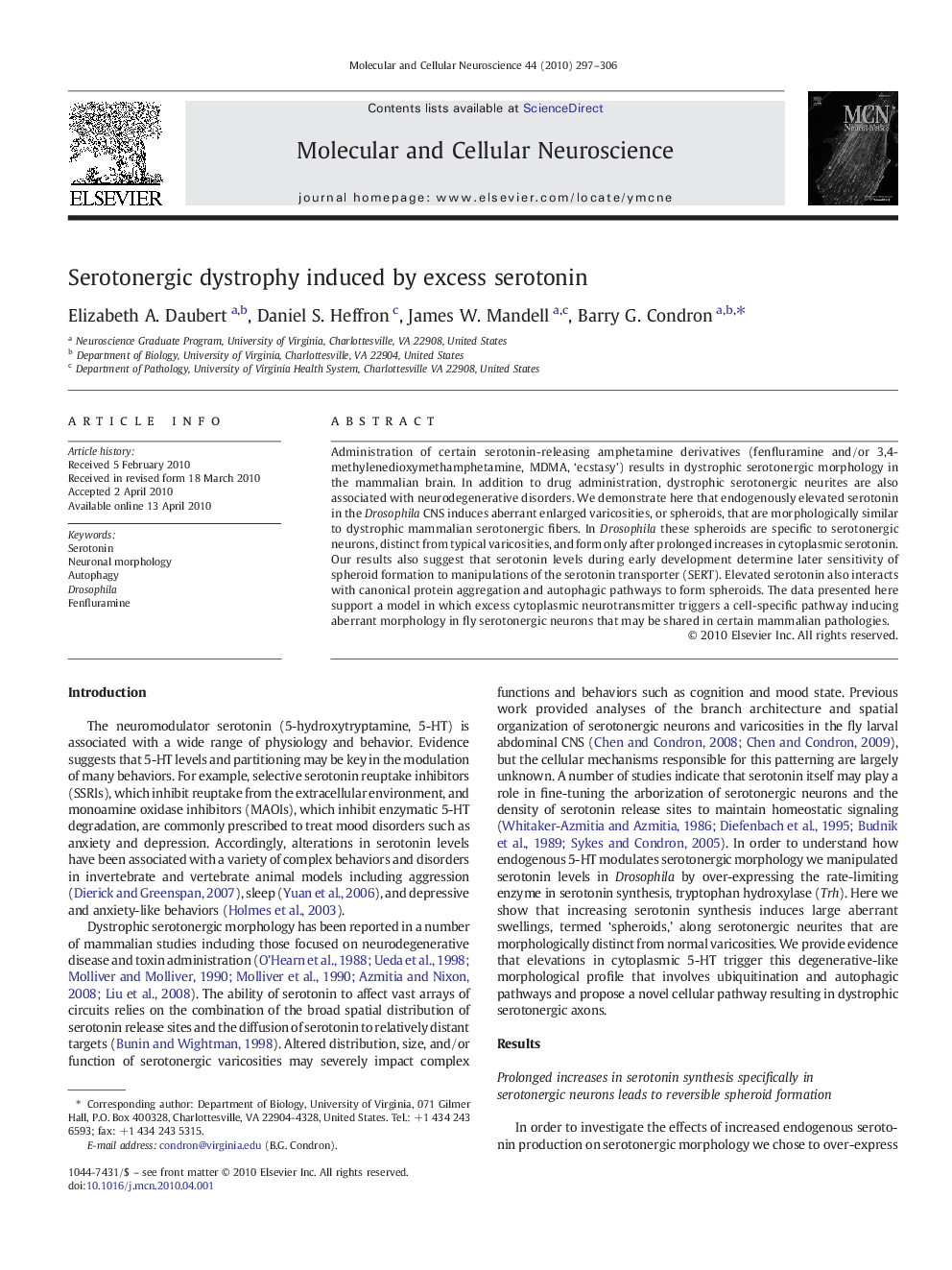| Article ID | Journal | Published Year | Pages | File Type |
|---|---|---|---|---|
| 10956707 | Molecular and Cellular Neuroscience | 2010 | 10 Pages |
Abstract
Administration of certain serotonin-releasing amphetamine derivatives (fenfluramine and/or 3,4-methylenedioxymethamphetamine, MDMA, 'ecstasy') results in dystrophic serotonergic morphology in the mammalian brain. In addition to drug administration, dystrophic serotonergic neurites are also associated with neurodegenerative disorders. We demonstrate here that endogenously elevated serotonin in the Drosophila CNS induces aberrant enlarged varicosities, or spheroids, that are morphologically similar to dystrophic mammalian serotonergic fibers. In Drosophila these spheroids are specific to serotonergic neurons, distinct from typical varicosities, and form only after prolonged increases in cytoplasmic serotonin. Our results also suggest that serotonin levels during early development determine later sensitivity of spheroid formation to manipulations of the serotonin transporter (SERT). Elevated serotonin also interacts with canonical protein aggregation and autophagic pathways to form spheroids. The data presented here support a model in which excess cytoplasmic neurotransmitter triggers a cell-specific pathway inducing aberrant morphology in fly serotonergic neurons that may be shared in certain mammalian pathologies.
Related Topics
Life Sciences
Biochemistry, Genetics and Molecular Biology
Cell Biology
Authors
Elizabeth A. Daubert, Daniel S. Heffron, James W. Mandell, Barry G. Condron,
